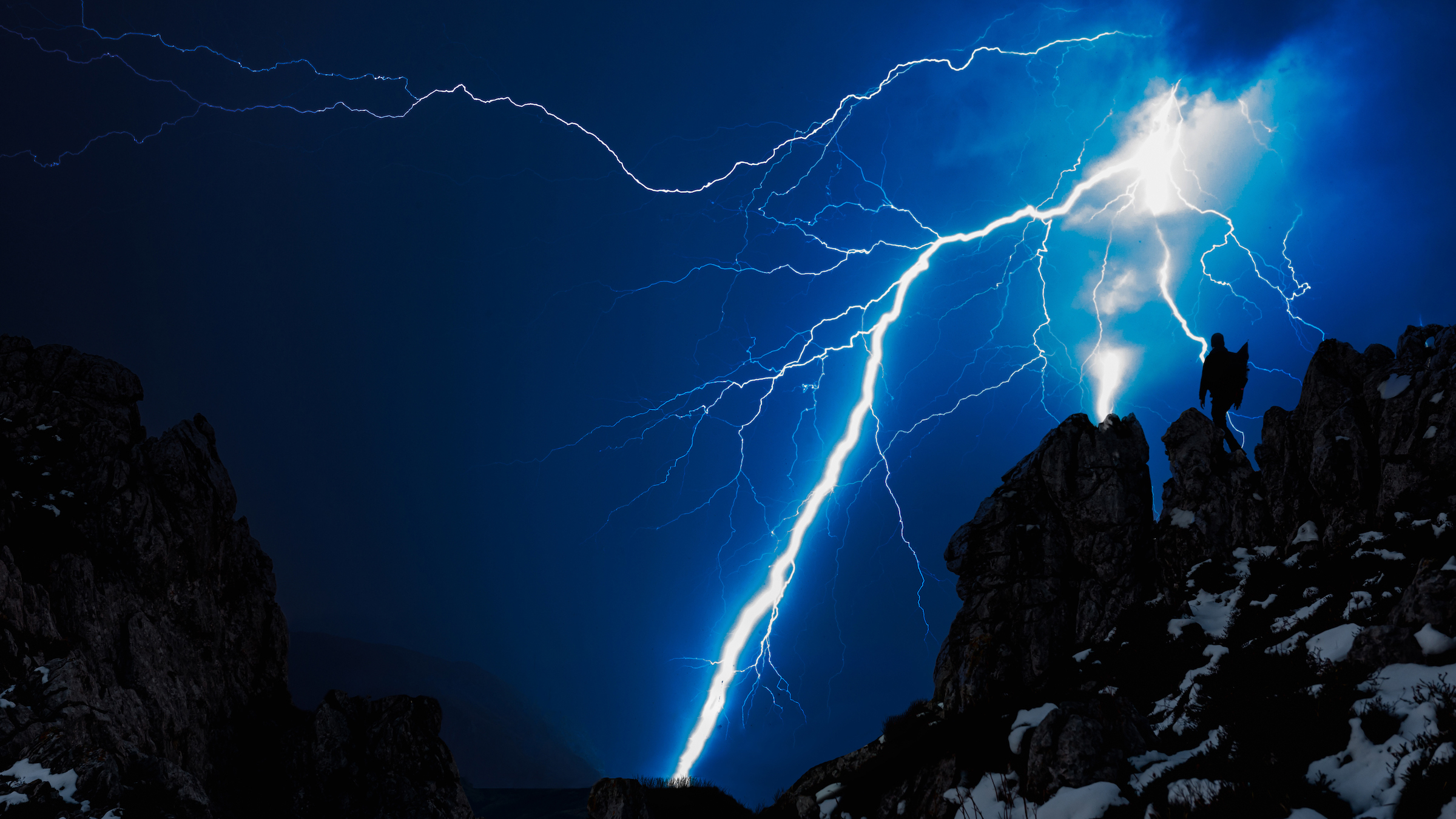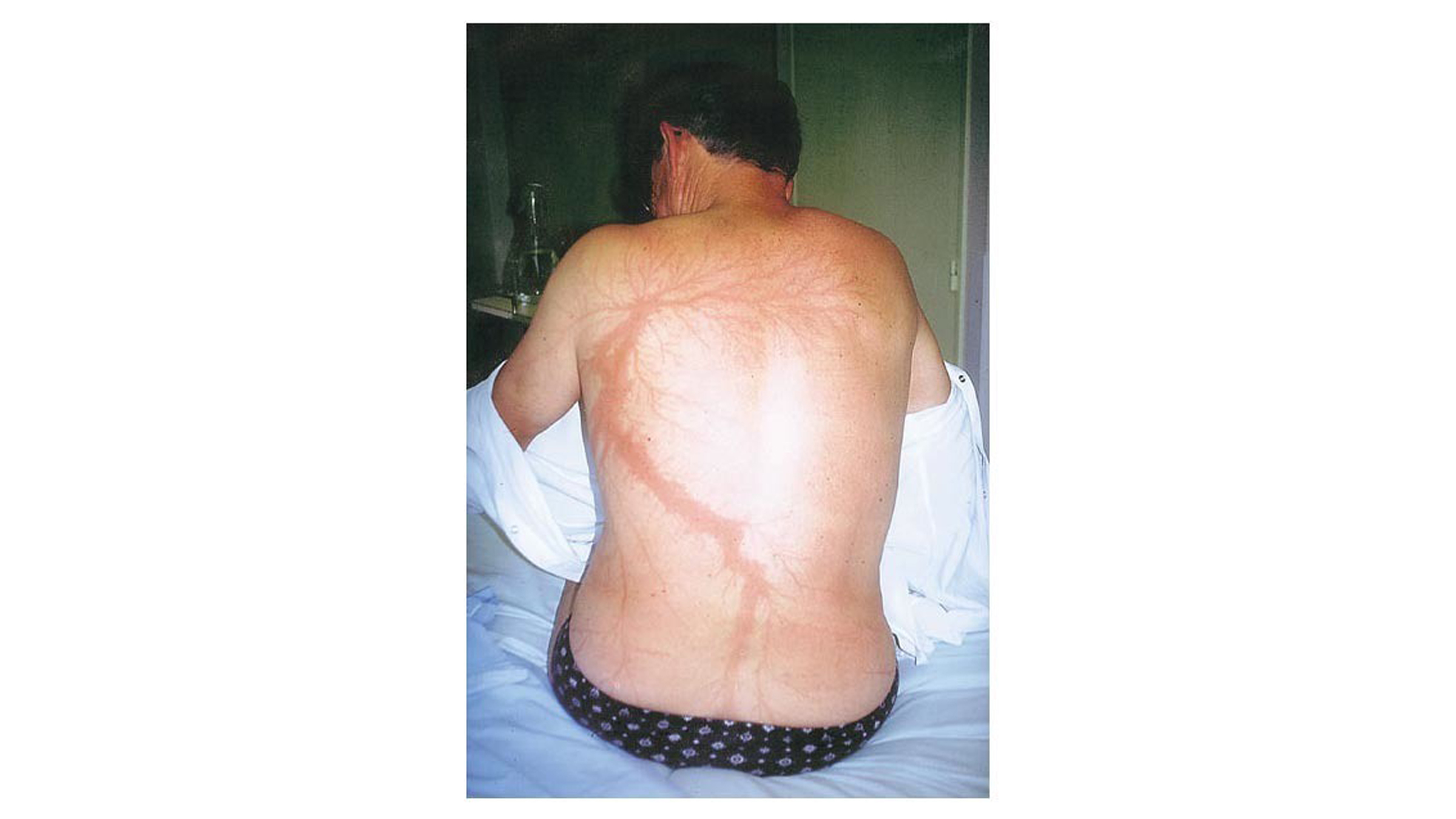What happens if you get struck by lightning… and survive?
Lightning is terrifying, but it's not always deadly. Here's what it does to the human body.

A few weeks into his new job as a forensic pathologist, Ryan Blumenthal got a call to examine a dead body that had been found in a field. The deceased person's clothing was torn and her eardrums had burst. "It looked quite the disturbing scene," said Blumenthal, who now works at the University of Pretoria in South Africa.
The culprit, however, was not a serial killer, but lightning. This electrically charged phenomena can send millions of volts of electricity through the body, and its destructive power sent Blumenthal down the path of becoming one of the world's top lightning pathologists. But what, exactly, happens when lightning strikes a person? And what happens if that person survives?
Most people who die from lightning strikes are killed instantly by cardiac arrest, as the bolt's massive electrical voltage short-circuits the heart's natural rhythm. Humans hit by lightning may also have their eardrums blown out by the incoming pressure wave, their respiratory system paralyzed, or suffer secondary burns as their hair or clothing catches fire.
But lightning doesn't kill all of its victims; around 90% of people struck survive. A lightning bolt can pass through your body within mere fractions of a second — often, not even enough time to leave a mark.
However, people who survive are usually left with nerve damage, post-traumatic stress disorder (PTSD) and neurologic symptoms "similar to the post-concussive injuries that football players get," such as impaired judgment and difficulty concentrating, Dr. Mary Ann Cooper, a lightning safety specialist at the National Lightning Safety Council and emerita professor of emergency medicine at the University of Illinois at Chicago, told Live Science. It is unclear exactly how these brain injuries occur, Cooper said, given the low number of lightning strikes and relative lack of funding for research. However, experts think that they are probably caused by some combination of tissue disruption from the current and blunt force trauma from the abrupt barometric pressure change.
Related: Why does lightning zigzag?
These conditions can be severe and even debilitating; some survivors report memory loss, chronic nerve pain, depression and even what they perceive as "psychic abilities" such as precognition, according to the National Weather Service. "Once you get struck by lightning, you're not the same person," Blumenthal told Live Science.
Get the world’s most fascinating discoveries delivered straight to your inbox.
Some survivors report fernlike "Lichtenberg figures" on their skin, which are thought to arise from damaged blood vessels leaking fluid into the surrounding tissue. In a 2020 case report from The New England Journal of Medicine, a 54-year-old man struck by lightning was described as initially stuporous, with numbness over parts of his body and Lichtenberg figures on his left arm and thigh, back and buttocks. However, the figures were painless, he reported, and were gone two days later when he returned to the doctor.
The world record for most lightning injuries is Roy Sullivan, a park ranger for Shenandoah National Park. Between 1942 and 1977, Sullivan was struck by lightning seven separate times. Though he sustained burns from his hair and clothes catching fire, he survived all seven strikes. He died by taking his own life in 1983 at the age of 72.
Suicidal thoughts are another symptom experienced by some lightning survivors, who can experience severe pain and recovery problems following the event, Steve Mashburn, whose back was broken in a 1969 lightning stroke, told The Washington Post. Mashburn runs an international support group for lightning survivors.
Fortunately, lightning injuries are among the most preventable in the developed world. If you find yourself outside during a thunderstorm, simply "run like hell to a safe space," Cooper said. "And don't come out until there's been no lightning and no thunder for 30 minutes."
Blumenthal cautioned that only between 3% and 5% of lightning strikes are direct hits. Contact injuries, which occur when a person is touching an object — such as a tree or building — when it is hit with a lightning bolt, account for another 5% of lightning injuries. The most common lightning injuries are from side flashes and ground current, which together cover more than 80% of lightning trauma. In a side flash, the victim is standing near an object when it gets struck by lightning, causing some of the electric potential to "splash" over onto the bystander. Ground current is similar, except it happens when lightning strikes the ground beneath the victim's feet. These incidents can harm multiple bodies at once. "This is why whole herds of animals get wiped out by lightning," Blumenthal told Live Science.
Related: What's the longest lightning bolt ever recorded?
The final 10% to 12% of lightning injuries are caused by the odd phenomenon of upward streamers, when positively charged electrical forces on the ground become attracted to negatively charged storm clouds overhead. As the positive charge builds up, it sends a "tendril" of charged air into the sky, which an electric shock travels down.
Today, lightning deaths are relatively rare in the United States, thanks in no small part to the efforts of Cooper and her fellow members of the National Lightning Safety Council. Since 2001, the Council has held an annual Lightning Safety Awareness week to draw attention to the dangers of lightning strikes. When the initiative began, the U.S. saw around 55 lightning deaths on average per year. In 2022, that number had dropped to 19, according to the Insurance Information Institute.
Now, Cooper and Blumenthal hope to bring a similar level of awareness, as well as resources such as lightning rods, to Africa. Cooper's new initiative, the African Centers for Lightning and Electromagnetics Network (ACLENet) is focused on reducing lightning deaths for both people and livestock across the continent. This mission is especially important given the accelerating pace of climate change, which results in more frequent and severe storms.
"We're going to see more extreme weather over shorter time periods," Blumenthal says. "So we have to take this deadly seriously."

Joanna Thompson is a science journalist and runner based in New York. She holds a B.S. in Zoology and a B.A. in Creative Writing from North Carolina State University, as well as a Master's in Science Journalism from NYU's Science, Health and Environmental Reporting Program. Find more of her work in Scientific American, The Daily Beast, Atlas Obscura or Audubon Magazine.




